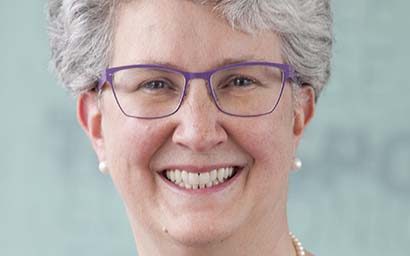Sustainability, or “non-financial”, risks and opportunities are increasingly top of mind for asset managers in Europe. As the EU Sustainable Finance Action Plan sets out a strategy “to further connect finance with sustainability,” the Sustainable Finance Disclosure Regulation (SFDR) will soon require new disclosures from financial services providers, a soon-to-be-revised Non-Financial Reporting Directive (NFRD) will require enhanced reporting from portfolio companies, and the EU Taxonomy will call for new information from both.
These developments will provide a more complete picture of how companies create value over the long term, how financial market participants and products facilitate sustainable development, and how markets can most navigate the transition to a resilient, low-carbon economy. However, these regulations could apply only to organisations and actors in the EU, while investors hold portfolios that cut across geographic boundaries. International information gaps will present no small challenge.
For this reason and others, the Sustainability Accounting Standards Board (SASB) is working with others in the non-financial reporting space – including CDP, the Climate Disclosure Standards Board (CDSB), and the Global Reporting Initiative (GRI) – “to provide the basis for … a globally harmonised system” for sustainability disclosure by companies. However, we’ve encountered a few common misperceptions of our work.
The first myth is that SASB standards are only for US markets. Not true. Businesses and investors around the world use SASB standards to better identify, manage, and communicate financially material sustainability risks and opportunities.
The hundreds of companies reporting with SASB standards hail from more than 30 countries, the nearly 500,000 downloads of the standards come from more than 170 countries, and members of our Standards Advisory Group represent 22 countries. There is strong, growing support from global investors.
The second myth is that SASB standards are a substitute for GRI. Wrong again. SASB and GRI are mutually supportive and designed to fulfil different purposes. SASB’s industry-specific standards identify the sustainability-related risks and opportunities most likely to affect a company’s financial condition, operating performance, or risk profile. Meanwhile, GRI Standards focus on the economic, environmental and social impacts of the activities of a company, and hence its contributions – positive or negative – towards sustainable development. Companies can (and do) use both SASB and GRI standards to meet the needs of key audiences.
The third myth is that SASB rates company performance. Absolutely not. As an independent standard-setting organisation, SASB does not rank, rate, or evaluate the sustainability performance of companies. We set standards for disclosure – not for performance. Our approach is premised on the idea that when markets have access to consistent, comparable, and reliable sustainability information, investors can evaluate performance. Markets can then more efficiently price risks and opportunities, and investors can more readily allocate capital to the firms putting it to its highest and best use.
The sustainability reporting landscape is often perceived as overly confusing. As sustainability disclosure and transparency are necessary for more efficient, stable, and resilient capital markets, misinformation is a liability investors can’t afford.
By Janine Guillot, CEO, the Sustainability Accounting Standards Board (SASB)
© 2020 funds europe





